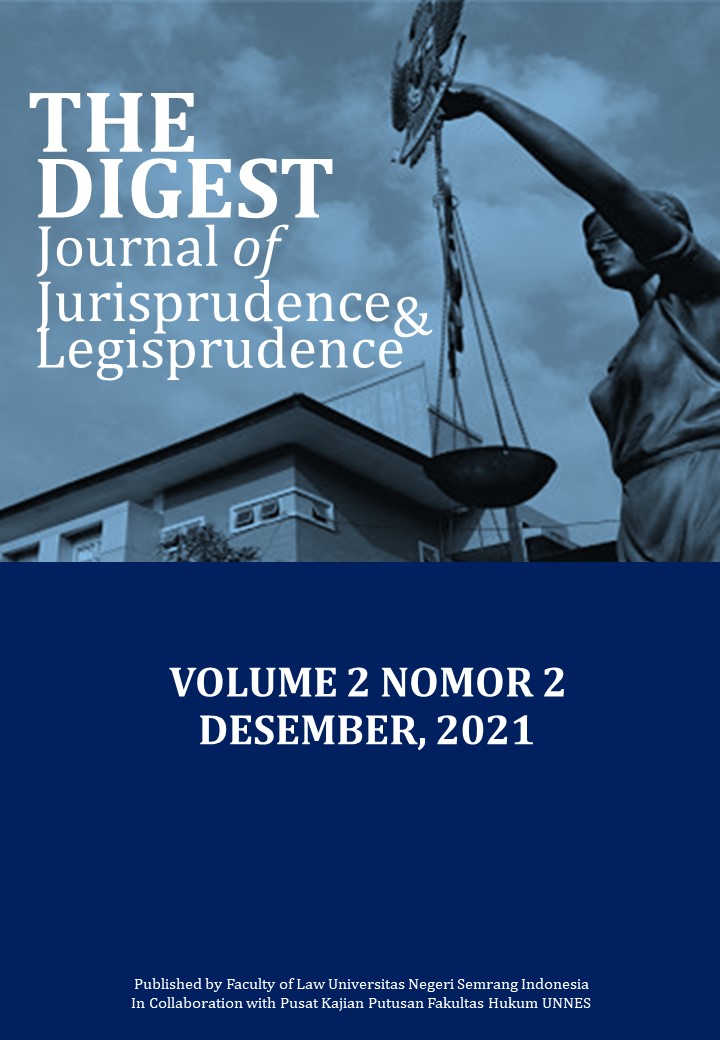Analisis Putusan Mahkamah Internasional dalam Kasus Sengketa Indonesia-Malaysia Mengenai Pulau Sipadan dan Ligitan
Main Article Content
Abstract
Disputes between Indonesia and Malaysia in the International Court of Justice on the issues of the islands of Sipadan and Ligitan continued to roll throughout the year until 1997 both countries raised this issue in international law. The two islands which are located in the center of Indonesia, precisely in the Makassar Strait, were finally won by the Malaysian side on December 17, 2002 The Court finally decided that Malaysia is the party that has full sovereignty over Sipadan Island and Ligitan Island. In its decision. The court made the doctrine of "ejfectivites" the main consideration for declaring Malaysian ownership of the two islands. According to the Court, the conventional Indonesian title claim and the OlY Malaysia chain of title claim are as weak as they cannot provide legal evidence that can support their respective ownership claims in the two disputed islands. The Court also believes that there is no authentic documentary evidence that can be sure that the two disputed islands belong to the Dutch or British territories. after various international legal channels taken by these two countries because it is based on several factors, namely: continuous presence, effective occupation, management and preservation of nature. This was confirmed in the Report of the International Court of Justice 1 August-31 July 2012, the decision of the International Court of Justice was carried out through bargaining led by presiding judge Gilbert Guillaume from France who established Malaysia as having sovereignty over the islands of Sipadan and Ligitan. Thus Malaysia has the right to draw a base line as its boundary to the outer points of Sipadan Island and Ligitan Island. As a friendly country, diplomatic relations between Indonesia and Malaysia were disrupted at that time due to the overlapping claims between Indonesia and Malaysia over the islands of Sipadan and Ligitan, which emerged since 1967, but as we know, based on The Hague's two conventions on resolving international disputes this, the countries (members) make maximum efforts to resolve international disputes peacefully. For this purpose, as long as the situation still permits or permits, the parties agree to submit their dispute to good services, mediation or the commission of inquiry to settle their dispute (diplomatic means) therefore a peaceful path is pursued by the two countries cannot do big things as a form of change in accordance with their wishes.
Article Details
All works published in The Digest: Journal of Jurisprudence and Legisprudence are licensed & copyrighted under a Creative Commons Attribution Attribution-ShareAlike 4.0 International. Under this license, the authors published in The Digest: Journal of Jurisprudence and Legisprudence retain the copyright. All other authors using the content of The Digest: Journal of Jurisprudence and Legisprudence are required to cite the author(s) and publisher in their work.
References
Arsana, I. M. A. (2007). Batas Maritim Antar Negara. Yogyakarta: Gadjah Mada university Pers.
Hendrawati, M., dkk. “Pengendalian Efektif dengan Cara Akuisisi Teritorial: Analisis Kasus Sipadan dan Ligitan”. Jurnal Universitas Hasanudin. Diakses pada tanggal 28 Desember 2019
Juwana, H. (2019). “Putusan MI atas Pulau Sipadan dan Ligitan”. Jurnal UGM. Diakses pada tanggan 28 Desember 2019.
Parthiana, I. W. (2003). Pengantar Hukum Internasional. Bandung: Mandar Maju.
Putra, I. B. W. (2013). Bahan Kuliah Hukum Penyelesaian Sengketa Internasional. Denpasar: FH UNUD.
Starke, J. G. (2001). Pengantar Hukum Internasional: Edisi Kesepuluh. Penerjemah: Bambang Iriana Djajaatmadja, S.H. Jakarta: Sinar Grafika.
Suwardi, S. S. (2004). Pengantar Hukum Organisasi Internasional. Jakarta: UI Press.
Tuhulele, P. (2019). “Pengaruh Keputusan Mahkamah Internasional Dalam Sengketa Pulau Sipadan dan Ligitan Terhadap Penetapan Garis Pangkal Kepulauan Indonesia”. Jurnal Unpatti. Diakses pada tanggal 28 Desember 2019.
